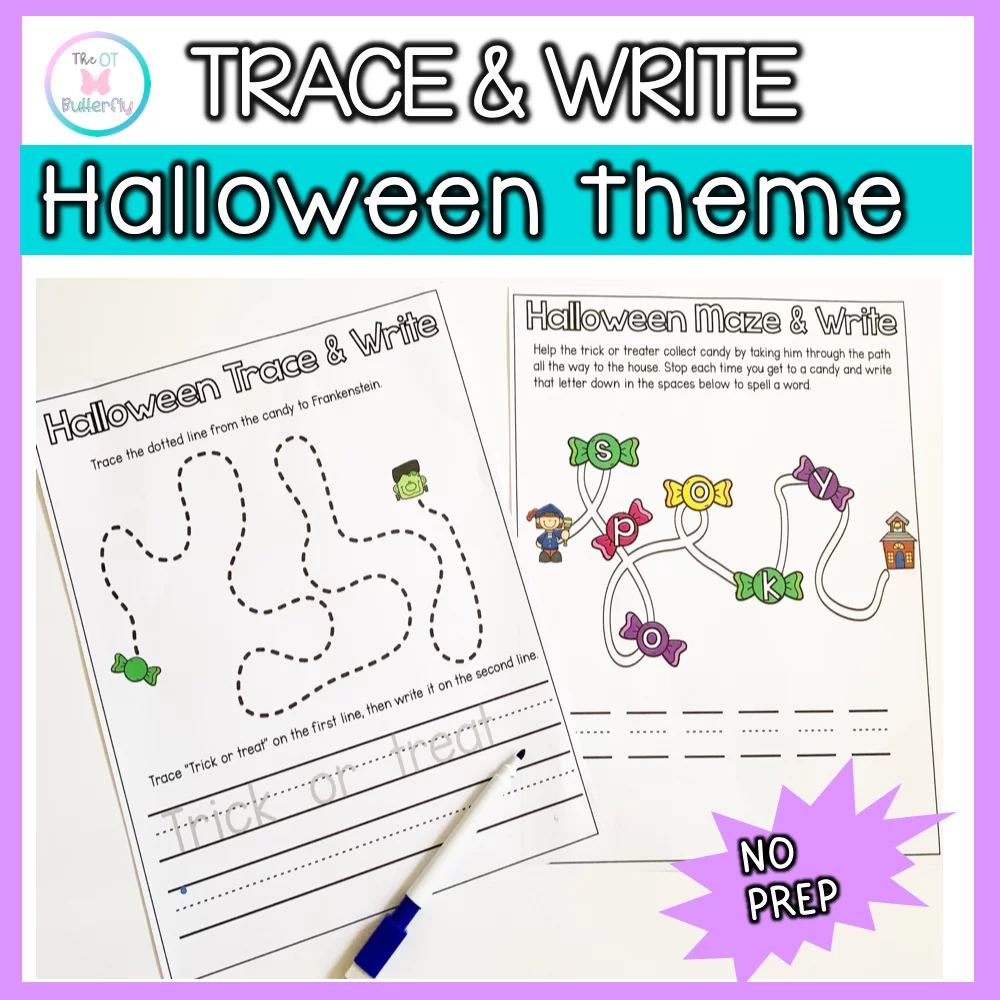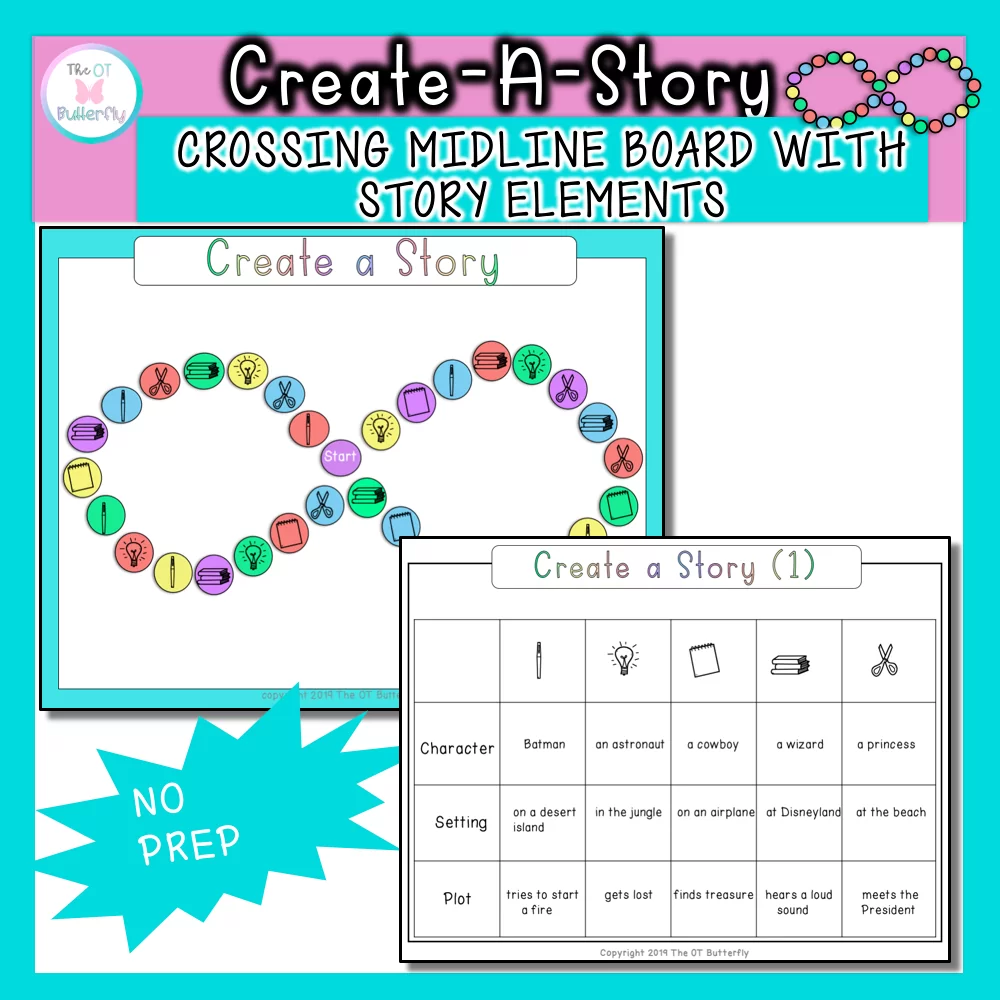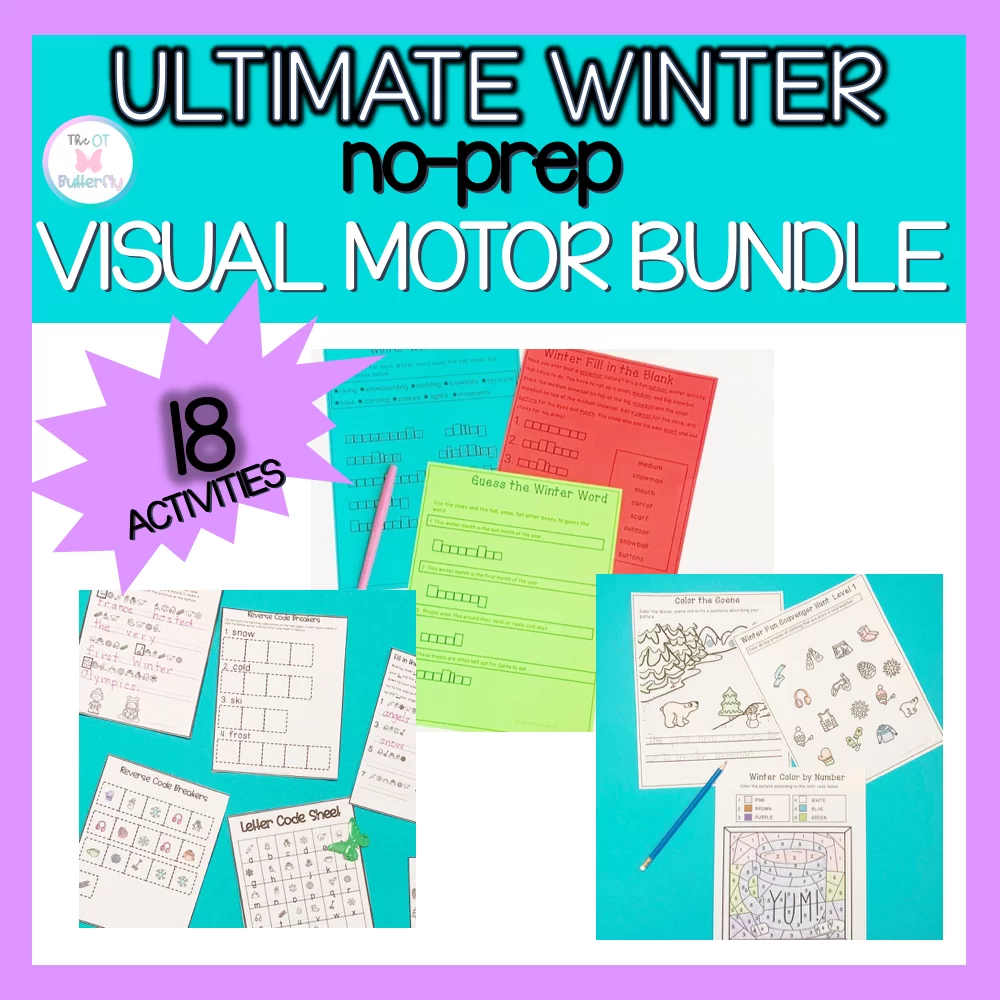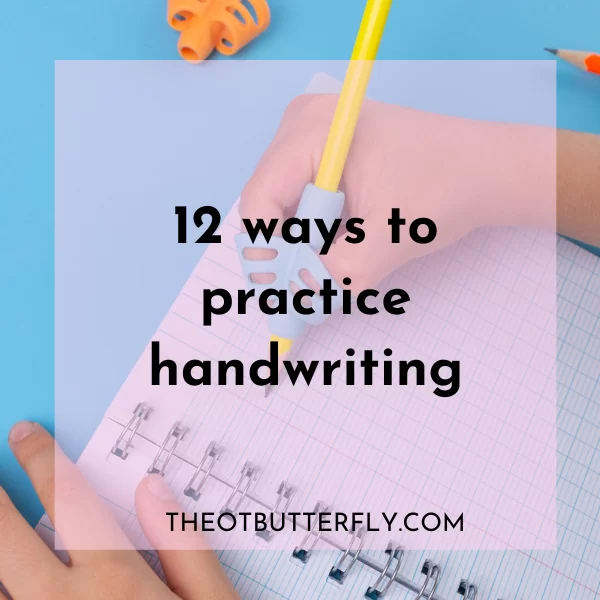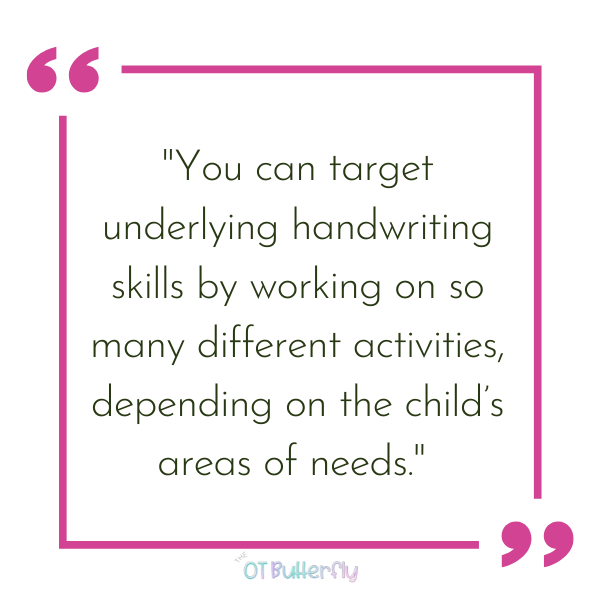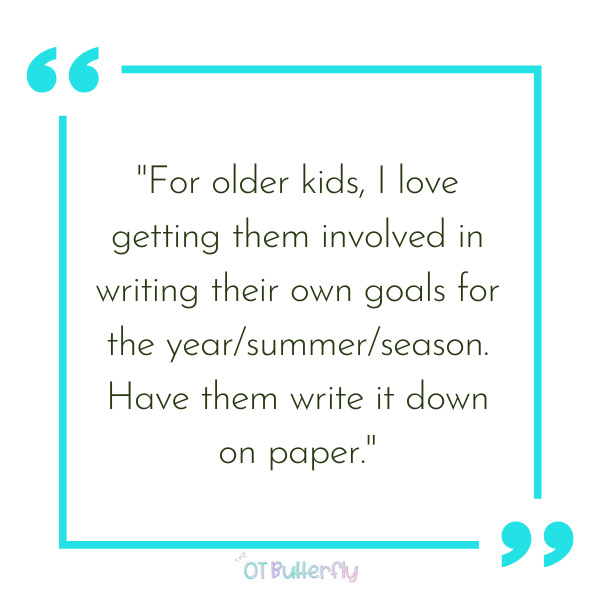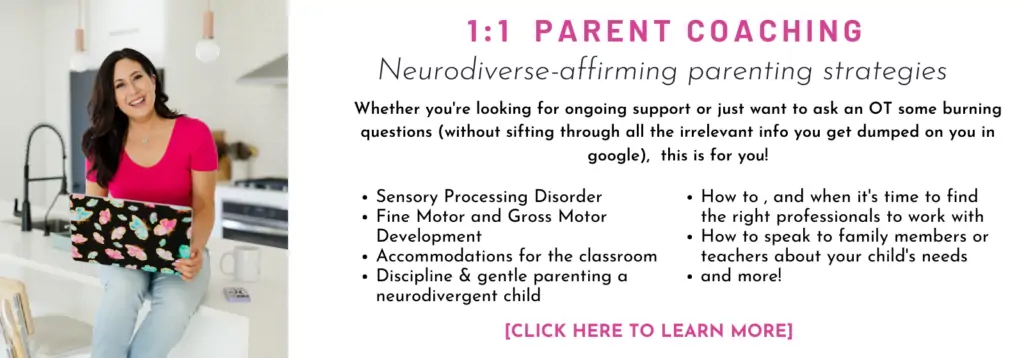Get your FREE sensory profiles cheat sheet >>click here<<
12 Ways to Practice Handwriting
If you’ve read my post on the development on handwriting skills, you know that handwriting isn’t just about handwriting.
You can target underlying handwriting skills by working on so many different activities, depending on the child’s areas of needs.
But of course, we do still work on handwriting as a functional task, and we as OTs are always getting clever with how we motivate kids to practice handwriting.
Below, I’m sharing with you a list of fun, motivating ways to practice handwriting with kids.
- Partner story telling: After deciding on a topic of interest, I take turns with my client writing one sentence at a time to build a story.
- I spy: Instead of verbally stating what you see in the room, describe it by writing down adjectives and uses for that object. Switch papers and try to guess what the other person was looking at.
- 2 truths and a lie: Write down 2 things that are true about you and 1 thing that isn’t true about you and have your partner guess what the lie is!
- Making a plan: Whether it’s building an obstacle course, making a peanut butter sandwich, or making their bed- have the student write down step by step instructions on how to do a particular task. This offers ways to target executive functioning sequencing skills.
- Writing a list: Around the holidays, or birthdays have them write down their wish list. Or, write a list of their favorite foods, their not so favorite foods, favorite iPad games, favorite books, etc.
- Who would win?: Such a popular idea with kids these days- pick any random animal, super hero, fantasy character and ask the child to write an opinion on who would win. I’ve done Superman vs. Ironman, Luke Skywalker vs. DonkeyKong and so many more!
- Guess who?: If you have the Guess Who boardgame handy, pull it out and give the client one of the people cards. Have them write down 3-4 clues to describe their person, then you guess who they were writing about.
- Mad libs: classic game. For older clients, I have them copy the whole paragraph in addition to filling in the blanks.
- Setting goals: For older kids, I love getting them involved in writing their own goals for the year/summer/season. Have them write it down on paper. Use this multi-skill goals check list to guide them.
- Pen Pals: I do this often in my clinic with clients who are similar in age and skill level. I “set up” two clients to write letters to each other and I “deliver it” to the other one during their session. No identifiable information is allowed to be written, of course, but they get to practice social skills asking questions and get really excited waiting for their next letter.
- Parts of Speech Game: Check out this handwriting game that involves a crossing midline component to encourage whole brain integration when coming up with parts of speech components.
- ABC story telling: Write a story in which every sentence starts with the next letter of the alphabet. for example: “Apples kept falling on the ground. Beth was so hungry. Claire told her to wait.”
Looking for more visual motor integration practice beyond basic handwriting? Take a look at my TPT store for some printable sheets. You might like:
